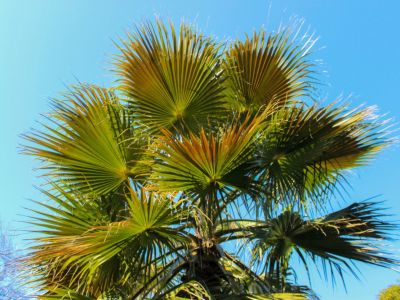Also known as Chusan palm, windmill palms are named for the large rounded leaves held above a slender stalk, creating a “windmill” like form. Windmill palm trees are covered with dense, brown, hairy fibers with the 1 1/2 foot (46 cm.) long, fan-shaped fronds extending outward from jagged petioles. Although the windmill palm can attain heights of 40 feet (12 m.), it is a slow growing variety and generally is seen between 10 and 20 feet (3-6 m.) by about 12 feet (3.5 m.) wide. Windmill palm trees flower too. Male and female flowers are 2 to 3 inches (5-8 cm.) long, dense, yellow and borne on separate plants held close to the trunk of the tree. The trunk of this palmate appears to be sheathed in burlap and is quite slender, 8 to 10 inches (20-25 cm.) in diameter, tapering downward from the top.
How to Plant a Windmill Palm Tree
Windmill palm planting often occurs in confined areas. Utilized as an accent, specimen plant, patio, or framing tree, and as a container plant, windmill palm trees may be grown either indoors or outside. Although it makes a fabulous focal point and is often used to set off a patio or sitting area, this palm tree shines when planted in groupings of 6 to 10 feet (2-3m.) apart. Growing windmill palms does not require any specific soil type. Windmill palms grow best in shade or partial shade; but as it is a fairly tolerant species, they may also do well situated in a sun exposure in the northern range when supplied with ample irrigation. When growing windmill palms, it is important to maintain a routine watering schedule. As said, these trees are not soil particular, however, they do prefer fertile, well-drained soils. Windmill palm planting should occur with some consideration to sheltering, as winds will cause leaf shredding. Despite this caution, windmill palm planting does occur successfully close to ocean shores and is tolerant of salt and winds there. As the windmill palm is a non-invasive specimen, propagation is most commonly achieved through seed dispersal.
Windmill Palm Problems
Windmill palm problems are minimal. Generally pest-free in the Pacific Northwest, windmill palms may be attacked by scale and palm aphids in other climates. Windmill palm problems via disease are also moderate, however, these trees may be susceptible to leaf spots and lethal yellowing disease.
